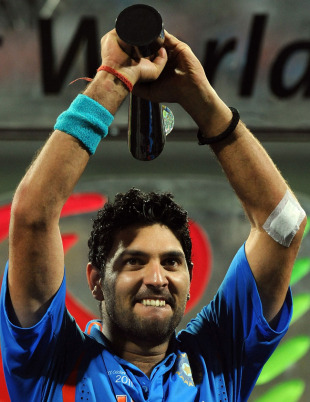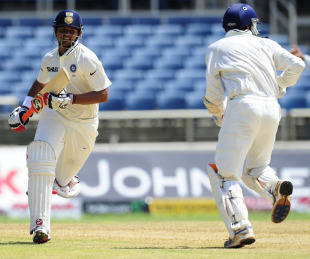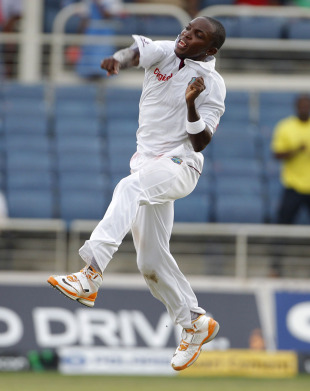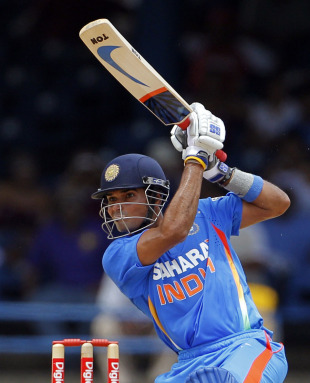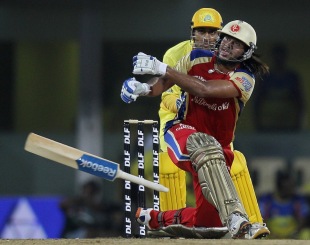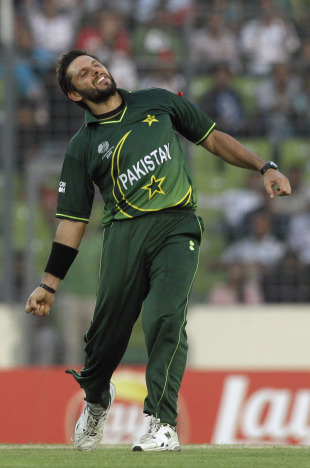India 201 (Laxman 85, Raina 53, Rampaul 3-38, Bishoo 3-46, Edwards 3-56) and 269 for 6 decl. (Laxman 87, Dravid 55, Edwards 5-76) drew with West Indies 190 (Samuels 78*, Ishant 6-55) and 202 for 7 (Bravo 73, Baugh 46*, Ishant 4-53)
Live scorecard and ball-by-ball details
How they were out
| 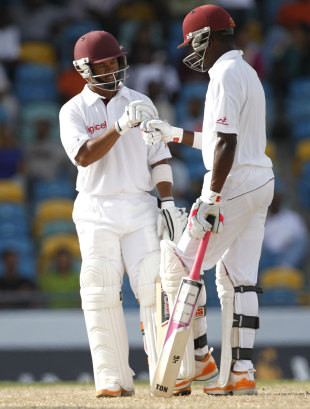
| Darren Bravo and Carlton Baugh denied India© Associated Press |
| Enlarge |
|
|
Close to 128 overs of play lost to the elements, Barbados still managed to produce a dramatic draw. On the final day, India made a bold declaration to bring the Test to life, and Darren Bravo sucked the life right out of it with an innings of application and resolve. India set West Indies 281 to get in 83 overs, Ishant Sharma helped them take early wickets, but Bravo, Shivnarine Chanderpaul and Carlton Baugh thwarted India for 322 deliveries between them.
There were two twists in the final session. An ordinary lbw call against Chanderpaul, followed by Marlon Samuels' wicket, would surely have sparked controversy had West Indies lost the match. With a maximum of 36 overs remaining, Bravo and Baugh put up further resistance. Baugh attacked too. At one point the target came down to 102 off 19.3 overs, and he kept India honest with the odd blow after that. Rain intervened, India came back with two quick wickets to turn the equation to three wickets required in 10.4 overs, but quite fittingly bad light brought the match to a premature end.
There was a rain break just before the start of the mandatory overs, prior to which Baugh had hit Abhimanyu Mithun for three back-to-back boundaries. The rain break was a bit instructive as to where the teams stood with regards to the result. Even as the Indian players hung about, hoping that it would just be a passing shower, Bravo and Baugh wasted little time in getting back to the dressing room.
It was huge credit to the quality of the pitch that we came this close to a result. Some of the credit has to go to MS Dhoni, too, for making the declaration 67 minutes into the day. It was a huge departure from the usual for Dhoni. His previous
third-innings declarationshave left sides chasing 516, 403 and 617 respectively.
Credit also has to go Ishant, who became only the seventh Indian pace bowler to claim a Test 10-wicket haul. He backed up Dhoni's declaration with aggressive bowling at the start, in the middle, and also in the end. The quality of the pitch and the opposition would have played a big role in the declaration, but West Indies showed character in saving the game. Especially pleasing would be that following Marlon Samuels in the first innings, another flamboyant batsman, Bravo, played with restraint for the larger cause.
Bravo came in to bat in the seventh over, after both Lendl Simmons and Ramnaresh Sarwan had fallen chasing wide deliveries. Adrian Barath hung around for 64 deliveries, but he was worked over by Ishant. An inswinger was followed by one that left him, after which Ishant produced one that got big on Barath and took the shoulder of the bat.
At that point 65 overs still remained. Ishant and Praveen Kumar worked hard for the next seven overs, but Chanderpaul and Bravo looked solid for the most part. If this situation was right up Chanderpaul's alley, it was a less familiar experience for Bravo. That showed in how he felt the need to score every now and then. To play the release shot every once in a while. Defending for long durations can get pretty tense, with close-in fielders ready to pounce on any edge. Bravo released that tension at the first sighting of Mithun, driving and glancing him for two boundaries in his first over.
Chanderpaul at the other end batted like he was born to do just this: save Test matches for West Indies, batting aggressors into submission. He kept leaving balls even marginally outside off. When he did play he did so with soft hands. He spent 16 balls on 5, and 23 on 9, but India couldn't draw a false stroke out of him. Bravo, who stayed impressive when defending, kept playing the odd shot in between, including a slog sweep off Harbhajan Singh through midwicket.
Soon after tea, though, Chanderpaul was given lbw off an offbreak hitting him outside off, and heading further away. Ishant followed that up with Samuels' wicket off an inswinger. While Bravo remained solid as ever, India sensed an opportunity with Baugh, who despite a superb series behind the wicket is considered under pressure for the want of runs.
Harbhajan Singh, who had got Baugh three times previously in the series, attacked him with men all around the bat. An edge appeared off the fifth ball, but Dhoni dropped it. Baugh had by then realised he might not have the defensive technique suitable for the task, and began to attack in order to get the fielders out of his face. It worked. After slog-sweeping Harbhajan for a six, Baugh went after Mithun, and with the target not impossible, India took a step back.
Towards the end, though, Bravo finally lost concentration, following a wide delivery from Mithun, ending what has to be best Test innings so far. Ishant swooped in again, making Sammy his 10th victim, with a yorker, but in fading light that's all we had time for.
